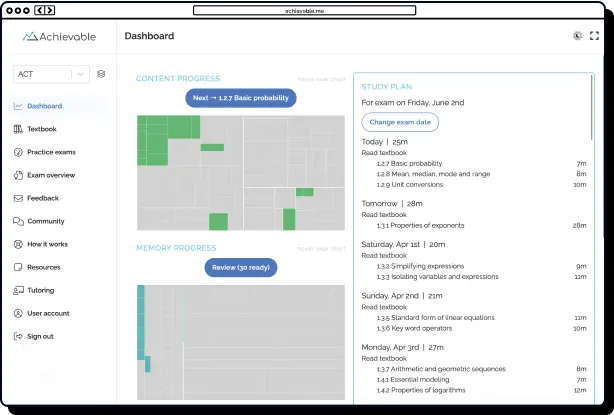
Teacher certification (2025 - 2026): What you need to know




Table of contents
- Step 1: Earn a bachelor’s degree
- Step 2: Complete a teacher preparation program
- Step 3: Explore online teacher certification programs
- Top online certification programs (2025):
- Step 4: Pass required teacher certification exams
- Step 5: Apply for your teaching license
- Step 6: Understand state-specific certification rules
- Step 7: Maintain and renew your teaching license
- Final thoughts
Want to become a teacher? Learn how to get licensed, explore online certification programs, and understand state-specific teaching requirements across the U.S.
This guide provides a helpful overview of the teaching certification process. For a full list of requirements to become a certified teacher where you live, explore our full directory of Teaching Certifications by State.

Step 1: Earn a bachelor’s degree
Every state in the U.S. requires aspiring teachers to hold at least a bachelor’s degree. Most future teachers major in education, early childhood, or a specific content area such as English, math, or science. Those who already hold a degree in another subject can pursue a post-baccalaureate teacher preparation program to meet certification requirements.
A bachelor’s degree is the foundation. Without it, you cannot begin a state-approved licensure program, whether in person or online.
Step 2: Complete a teacher preparation program
To qualify for teaching certification at the state level, you must complete a state-approved educator preparation program (EPP). These teaching certification programs combine coursework in pedagogy, child development, classroom management, and subject-specific instruction. A critical component of each teaching certification pathway is student teaching, which involves a supervised internship within an actual K-12 classroom setting.
Many universities across the nation offer traditional, on-campus teaching certification tracks. However, online certification programs are becoming increasingly popular for those pursuing teaching certification, especially career changers or individuals seeking flexible and accessible formats.
Step 3: Explore online teacher certification programs
The next step in fulfilling certification education requirements is completing a post-baccalaureate teaching program, offered by most colleges and universities. Online certification is a valid and often efficient pathway to licensure. These programs offer flexibility, are typically more affordable, and still meet state standards when accredited.
Top online certification programs (2025):
- Western Governors University (WGU): Competency-based, regionally accredited, and offers licensure tracks in early childhood, elementary, and secondary education.
- Teach-Now/Moreland University: A streamlined 9-month certification program ideal for working adults or international teachers.
- Teachers of Tomorrow: Available in select states, this alternative certification platform partners with school districts and focuses on job placement.
- University of Southern California (USC): USC offers a prestigious master of Arts in Teaching (MAT) online with California credential options.
Always verify that your online program is state-approved and leads to licensure in your desired state.

Step 4: Pass required teacher certification exams
Each state requires aspiring teachers to pass at least one certification exam, often a Praxis test such as the Praxis Core, as part of the licensure process:
- Praxis Core Exam: The Praxis Core tests foundational skills in reading, writing, and mathematics. This exam is a standard requirement in many states for entry into teacher preparation programs and certification.
- Praxis Subject Assessments: These Praxis exams evaluate subject-specific knowledge and teaching skills needed for particular content areas and grade levels.
- State-specific certification exams: Certain states mandate their own teacher licensure tests, such as:
- edTPA: This is a performance-based portfolio assessment accepted in various states; however, New York discontinued the edTPA requirement in 2022, opting to use institutional evaluation methods instead.
To achieve success on required exams like the Praxis Core and other assessments, it is essential to prepare with comprehensive study guides, targeted practice resources, and full-length practice tests. Strategic preparation is a key step toward fulfilling licensure requirements.
Step 5: Apply for your teaching license
Once you’ve completed your teacher preparation program and achieved passing scores on your exams, such as the Praxis test, you’ll need to apply for your teacher license through your state’s department of education. The teacher licensure application process usually requires:
- Official academic transcripts
- Verification of teacher preparation program completion
- Passing teacher certification exam scores, including exams like the Praxis
- Successful background check and fingerprint clearance
The specific title of your teacher license, “Initial,” “Provisional,” or “Standard,” will depend on state regulations, and licensure processing times can range from several weeks to a few months.
Step 6: Understand state-specific certification rules
Though the overall teaching certification process shares similarities across the country, specific requirements and exams, such as the Praxis Core, vary widely from state to state. Here are some key examples of how teaching certification requirements differ:
- California mandates passing the CBEST or CSET exams and completing a two-tiered credentialing process (Preliminary to Clear) for teaching certification.
- Texas does not grant automatic reciprocity for teaching certification. Instead, all out-of-state applicants are reviewed individually for qualifications, which may include exams like the Praxis Core, depending on evaluation.
- New York recently eliminated the edTPA and now relies on institution-based performance assessments for teaching certification. Professional teaching certification in New York also requires 100 hours of professional development every five years.
- New Jersey uses a stepped approach for teaching certification, starting with a Certificate of Eligibility, progressing to a Provisional certificate, and finally to a Standard license. Numerous Certificate of Eligibility programs are available online through state universities, and tests such as the Praxis Core are sometimes part of initial requirements.
Before enrolling in any teacher preparation program or applying for a teaching job, it is essential to consult your state board of education for the most current teaching certification criteria, including exam requirements like the Praxis Core. This helps ensure you meet all necessary prerequisites for state licensure.

Step 7: Maintain and renew your teaching license
Most states require teachers to renew their teacher license every 3 to 5 years. Teacher license renewal requirements often include:
- Earning continuing education credits or professional development (PD) hours
- Demonstrating recent classroom teaching experience
- Completing advanced coursework or obtaining a master’s degree (in some cases)
In addition to state teacher license requirements, many educators pursue National Board Certification. This rigorous, voluntary credential can enhance teacher license portability, increase job opportunities, and boost salary potential.
Final thoughts
Understanding how to become a teacher in 2025 involves careful planning, preparation, and attention to the unique requirements set by each state. To begin your journey to becoming a teacher, start by earning a bachelor’s degree, then enroll in a state-approved educator preparation program (online or on campus). After completing your coursework, you’ll need to pass the required state teaching exams and submit your application for teacher licensure.
As you advance in your teaching career, it’s important to stay updated on your state’s ongoing professional development and license renewal requirements. With expanded access to flexible online certification programs and improved state reciprocity policies, becoming a teacher has never been more accessible. Now is the perfect time to take your first step toward the classroom and launch your teaching career.

